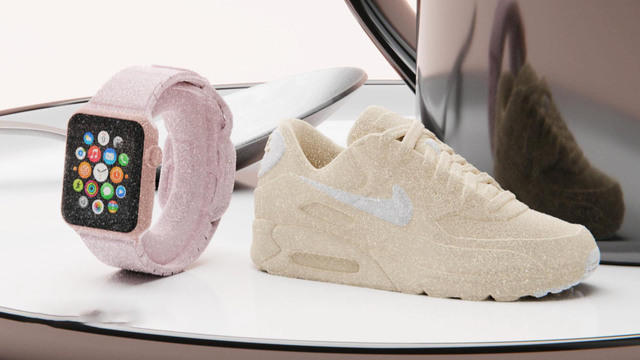▶ Watch Video: The Sugar Lab prints out some of Los Angeles’ sweetest treats
As 3D printing technology improves, people keep finding new uses for it. And the latest is pretty sweet: cheesecake. Researchers with the department of mechanical engineering at Columbia University created a seven-ingredient slice of cake using a 3D printer, and they say printing foods could be a new cooking option with several benefits.
Printing food is not as avant-garde as it sounds. Such printers have been used to make organs before, and similar technologies already exist in the food space – like pizza and bread robots, pasta printers and automatic cake decorators, the researchers say in the study, published in the NPJ Science and Food journal.
The researchers defined printed food as “the controlled deposition of an ingredient; as such, any ingredient that was extruded as a paste (e.g. peanut butter, Nutella, vegetable puree, mustard, ground beef, sausage, chicken nuggets),” and they say many existing processed foods can be considered “printed” by this definition.
So, in order to make the 3D-printed peanut butter-banana cheesecake with a cherry drizzle, all the ingredients had to be converted into paste-like substances.
All ingredients in the study were bought from a New York City grocery store. The peanut butter, Nutella, frosting and cherry drizzle required no additional prep, the bananas required mashing with a fork so they could fit through the nozzle of a syringe and the graham crackers were combined with butter and water to create a paste.
All seven ingredients were stuffed in to the 3D printer and then printed out in layers into the shape of a slice of cheesecake.
After seven different designs, the researchers found the construction of the print became similar to that of a home with “floors, walls, and ceilings being the foundation (graham cracker) and inner pools (Nutella and peanut butter) holding softer ingredients within (banana and jelly).”
The researchers say 3D printing food could allow cooks to control the nutrient content in a meal and also offer the ability to make more customized meals. It also reduces human contact with food, which could prevent the spread of food-borne illnesses and diseases.
They also see sustainability benefits to printing food, because ingredients can be locally sourced, plant-based meals can be created and the shelf life of the foods could be extended.
Printing food could also help people with swallowing and other digestive disorders, by providing new food options, rather than the bland foods they may be restricted to, the researchers say.
While some processed foods could have better taste, texture, cleanliness and shelf lives, processing foods can also degrade their nutrients. However, the researchers hope developing the 3D printing technology can help prevent nutrient degradation while processing foods.
While 3D printers can seem ultra-futuristic to some, they have been used for a wide variety of reasons for years, even building organs and limbs for patients who need transplants or prosthetics.
In 2014, a boy received a 3D-printed prosthetic hand from engineers at the University of North Carolina at Chapel Hill. In 2019, Researchers at Tel Aviv University created a 3D-printed heart, using a patient’s cells.
A Los Angeles-based company called The Sugar Lab uses 3D printing to make candy. And machines can help make 3D-printed houses, speeding up the home-building process by laying concrete to create the framework before humans come in and finish the rest.




































